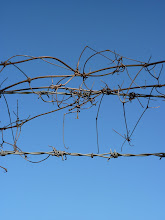Onagawa part 5 remnants and controversy
Two years on from the Tsunami and the main harbour of Onagawa has been cleared of rubble , the damaged buildings have in the most part all been demolished and their components recycled as part of the process to raise the level of the ground. However a striking feature in the now mostly empty landscape are three concrete multi-storey buildings lifted up and dropped on their side by a combination of ground liquefaction caused by the earthquake and the massive tsunami. Previously it was thought concrete structures such as these would withstand a tsunami as they had deep foundation poles. The unique and powerful conditions of this disaster proved that to be wrong.
These buildings have been left in situ for the time being as a reminder to future generations who live in the rebuilt town to be aware of the dangers of tsunamis.
This decision has proved controversial with opinions in the community split. Some people who lost relatives would like the buildings removed so there are no reminders of the tragedy. Many other people including classes of school children think it is more important to have a constant reminder to warn future generations citing the memorial dome preserved in Hiroshima as a good example.
A documentary was even made about this issue and the class of children campaigning to keep the buildings and this was broadcast in the U.K. by NHK World T.V.
During the show a respected architect offered a stark solution, he suggested the buildings should be located in small parks surrounded by a 20 meter high wall of black stone. When a tourist or resident visited the monuments they could view the damaged buildings under the shadow of an imposing wall the same height as the wall of water created by the tsunami. The buildings would be hidden from view for those that didn't want to see them.
Having visited the town and realised it's impossible to understand the scale of the disaster and destruction as a viewer from afar, I would tend to side with the school children after all they are the future of Onagawa .
I suppose with any major disaster and loss of life comes analysis, hindsight and controversy. If people can learn from the mistakes of this disaster and improve their chances of survival in the future then that is one of the few good things that can be gained from such an event.
This memorial on the recycled rubble stands at the site of a bank. Sadly the bank workers stayed at their posts worried about the money in the bank and obviously not realising just how large the tsunami would be. Unfortunately they all died in the bank as it was engulfed by the waves.
This incident, it was explained to me, has also proved controversial with relatives of the victims angry at the bank management for not forcing the employees to evacuate, perhaps even suggesting they were under pressure to stay at their posts to protect the money. Of course we will never know what happened on the day.
Previously in 1933 Onagawa was hit by a large and damaging tsunami. In the aftermath of that disaster a number of monuments with inscriptions warning of the danger that tsunamis will follow earthquakes were put up in the town. However it was explained to me that people in the town had forgotten the lessons on these inscriptions especially as there were not many people left that remembered the events .
Perhaps that is why they want a more stark reminder preserved for the children of the future.
Labels: architecture, Japan, Miyagi, Onagawa









0 Comments:
Post a Comment
Subscribe to Post Comments [Atom]
<< Home